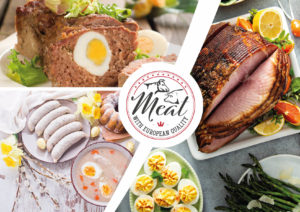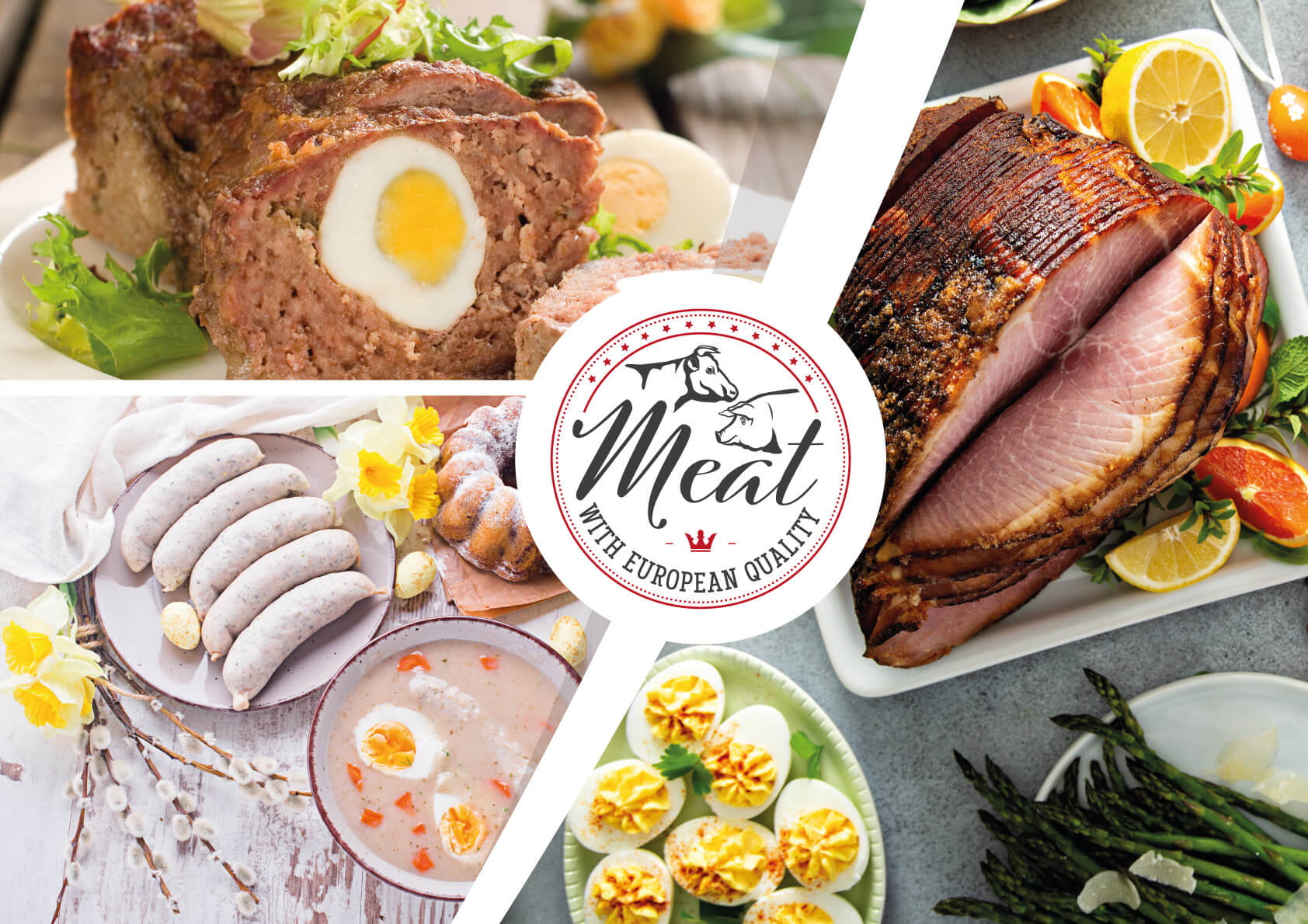Easter is one of the most important occasions for family gatherings in Christian culture. Depending on the region of Europe, Easter is mainly a festive breakfast or dinner spent with family. This custom derives from the tradition of Passover, which was celebrated in a similar vein even before the advent of Christianity. A traditional gathering involves many traditional dishes. Most of them are based on eggs and red meat, as well as increasingly on cold meats, beef and pork. It is worth checking which recipes might work well on your Easter table.
One of the most popular Easter dishes is roasted ham, often with sauces. Pork roast, like coloured Easter eggs, is the centrepiece of the Easter breakfast in both America and the Old Continent. Ham, together with domesticated pigs, came to America with colonisers from Northern Europe[1]. A few centuries ago swines, feeding on roots, tubers and acorns, were one of the very few sources of festive food at the beginning of the year. During the Industrial Revolution, pork was replaced by lamb due to the high demand for wool, but over time, pork returned to the forefront[2]. Traditional Easter ham is marinated in salt and sugar brine and then smoked or roasted. Roasts can be modified in many ways – the further west in Europe you go, the sweeter the variations. Ham can be marinated and served with oranges, apples, pears or pineapples[3]. In any case, always remember to cut the ham correctly in such a way as to create the distinctive checkered pattern. This pattern will also allow the meat to be penetrated with the flavour from both the marinade and the juice or dissolved sugar, which is poured over the ham at the end of roasting to give it a characteristic dark brown colour and sweet aroma.
The further east you go, the more traditional the approach to the Easter roast. In Central and Eastern European countries such as Germany, Poland or Lithuania, the spices and marinade are more traditional. The dominating seasonings are thyme, marjoram, salt, pepper, garlic, onion or honey. Regardless of the marinade and spices used, it is very important to make sure that each cooking procedure lasts an appropriate time. When cooking, one hour is needed for each pound of ham. When roasting, depending on the power and temperature of the oven, about an hour and a half is needed for each pound of meat[4].
Sausage is another typical Easter dish. In some European countries, sausage is a food that is blessed before consumption. The most well-known method of preparing sausages is smoking, but during Easter, many Eastern countries choose white sausage. The white sausage is not smoked and therefore does not acquire the distinctive dark brown colour. No smoking means that the process of its final preparation takes place in the dish it is added to, releasing flavour and aroma. One example of such a dish is żurek, a warm and comforting soup with ingredients such as horseradish, sour cream, white sausage, rye sourdough and hard-boiled eggs. It is a typically Polish festive dish[5].
There is no Easter without eggs. A dish similar in colour, also white, is the meatloaf called “Roman roast” in Polish. This is a very traditional minced meat roast with a previously hard boiled egg inside. The dish is baked in an ovenproof dish to keep its juiciness. In different countries of the Union, this roast has different versions and names. In France, for example, it comes in the form of a paté[6]. Due to the lack of smoking, white sausage and the different meatloaves have a very delicate flavour, therefore they are often served with other ingredients with a stronger flavour, such as horseradish sauce, pickles or beetroot salad.
Both European traditions and food products have a lot to offer for Easter. Delicate flavour, ethical production and proven recipes are an easy, quick and reliable way to guarantee a great family Easter.

- [1] https://www.bostonglobe.com/lifestyle/food-dining/2015/03/31/rituals-spring/RzL8F97kop8n5XaYZyjIdM/story.html
- [2] https://www.eatthis.com/easter-ham-origin/
- [3] https://www.goodhousekeeping.com/holidays/easter-ideas/g2353/easter-dinner-menus/?slide=1
- [4] https://haps.pl/Haps/7,167251,24391468,jak-upiec-szynke-co-zrobic-zeby-byla-krucha-i-soczysta.html
- [5] https://polishhousewife.com/zurek-a-polish-rye-soup/
- [6] https://www.tasteatlas.com/pate-de-paques
